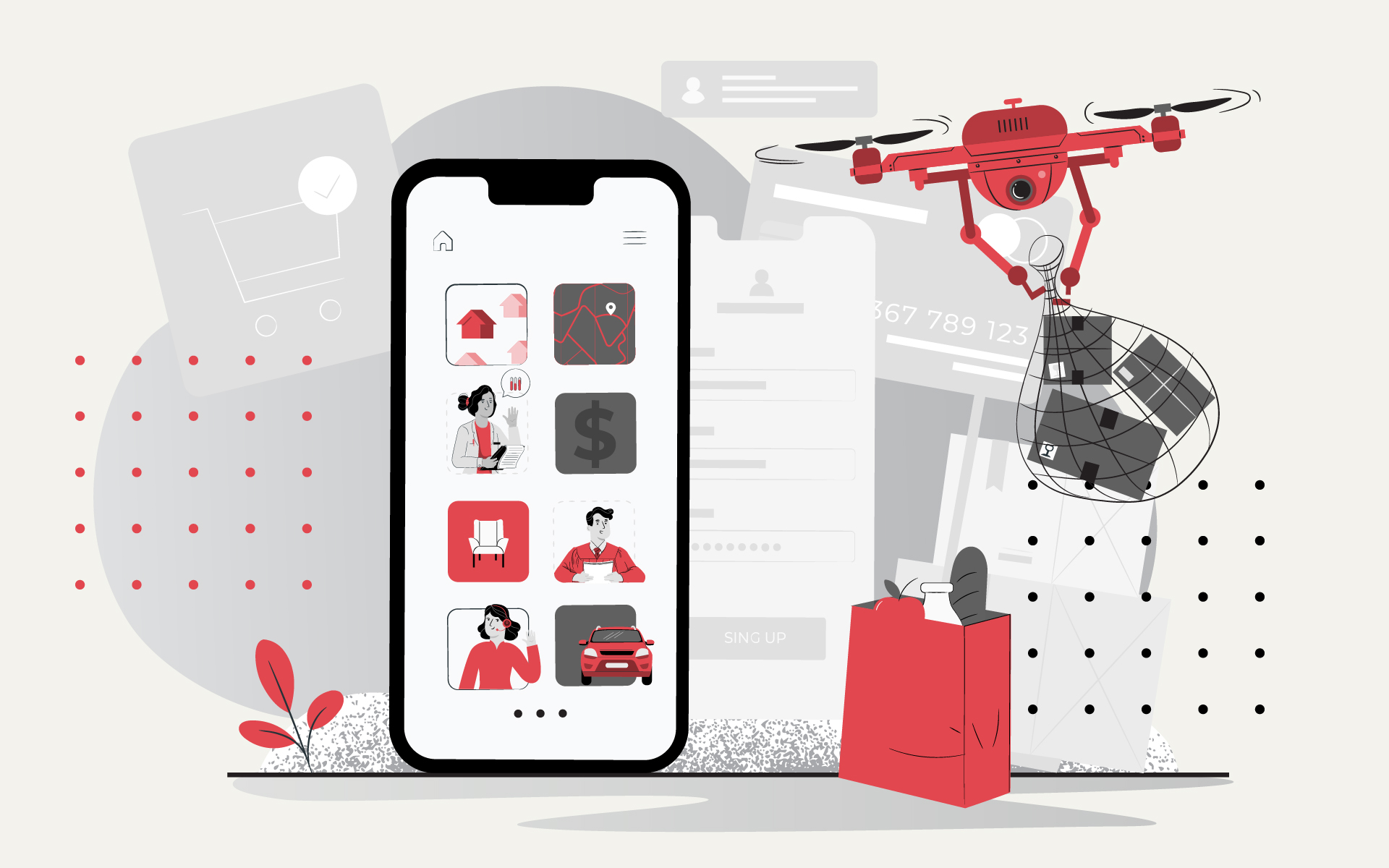 BACK TO ALL
BACK TO ALL

What is the on-demand service economy? The best example of this is Uber or any Uber-like app or platform that allows its users to quickly get what they want, whether it is a ride, groceries, or a meal from the nearest restaurant. The on-demand economy is not a new trend. Both businesses and regular people enjoy benefits provided by on-demand service platforms like Uber and Airbnb, and the number of these platforms’ users is growing every day. In this post, we are going to look into the future of on-demand services in 2020-2021 in terms of relevant technologies, service providers joining the platform, and industries implementing this business model.
A great increase in the number of people who are ready to join the workforce in the on-demand sphere
The popularity of on-demand services is growing steadily and is not going to decrease in the nearest future. As a result, more and more people are likely to start offering their skills, knowledge, or resources through on-demand applications. Many people are now involved in the industry because it offers regular and reliable additional income, as well as simplifies the search for potential clients. Businesses, in their turn, will be ready to accommodate the growing workforce by entering the on-demand territory themselves with new types of applications and a much wider range of services offered through them.
Highly qualified people will offer their services through on-demand service apps
So far, most of the services provided via these apps have required little to no special training. Cleaning, food delivery, services like Uber, etc. are just a few examples. However, a growing number of highly skilled people with qualifications, relevant experience and background will also look for ways to join the on-demand workforce. Medicine and healthcare are examples of industries that are going to become very popular. Through an on-demand service app, consumers will have the possibility to hire a nurse for medical care or assistance, receive a consultation from a specialist doctor, book a massage at home, and so on.
More industries and markets will resort to providing on-demand services
Together with the increasing workforce, we are going to see a rise in the number of industries that will join the on-demand service domain. Healthcare, which was mentioned above, is just one of the examples of relatively new services entering the world of such apps. We are also very likely to see the expansion of transportation and delivery services. As an example, the desire to use sustainably sourced and produced products can propel the popularity of on-demand delivery companies that provide such goods.
Background checks within apps will become more widespread
In some areas, hiring the first person who is available to do a task is not the best option. These are services connected with care, babysitting, construction, tutoring, and so on. The apps through which customers look for service providers are offering a quick background check. This way, app owners can find people with relevant experience and maintain user trust. Another trend within this category is apps specifically dedicated to doing on-demand background checking. They can be market-specific and perform checks for a certain type of service (for example, an app that checks only service providers within the construction market), but there can be also applications that encompass a wide range of industries.
Business analytics and intelligence will become increasingly important
Business analytics and data mining will be crucial for on-demand service apps and websites. With their help, business owners will be able to find out:
- demographics of their users;
- what types of services are in demand among different groups of users;
- whether their marketing strategies are attracting more people or the opposite;
This kind of business research is also essential at the initial stages of website or app development. Emerging on-demand services face increasingly stiff competition, while the top 5 industry giants receive more than 75% of funding (4 of those companies are in the transportation industry, by the way). A company launching an app will need to know what its target user is and whether there is an actual need for a certain type of service.
More and more large enterprises will be using on-demand platforms
Amazon managed to catch the trend years ago, which has led the company to its modern position at the top of the e-commerce industry. Nowadays, it’s hard to imagine a business that can compete with Amazon when it comes to on-demand e-commerce. And yet, other giants aren’t planning to give up on this fight so easily. Walmart, which is mostly known for its department stores, is about to establish an on-demand platform in the upcoming years. This company clearly isn’t a “just another emerging startup.” Walmart has enough resources to challenge Amazon in the latter’s own game. Other enterprises can’t avoid following the trend, so we’ll definitely see incredibly stiff competition between the huge brands in the nearest future.
On-demand service apps are starting to learn with the help of Artificial Intelligence
The potential Artificial Intelligence has in business is still being studied but seems promising. We can definitely see it being implemented into the on-demand service sphere. Similarly to data mining and analysis, AI can provide business owners with a lot of information, which will help them make important decisions aimed at improving user experience. Some of AI’s applications in on-demand apps are:
- making search within an app more optimized;
- studying patterns and providing users with better-targeted and personalized options;
- introducing chatbots and virtual assistants to provide 24/7 customer support;
- studying trends within your on-demand service app.
The Internet of Things will make on-demand services more efficient and profitable
The Internet of Things is a network that allows objects around us to communicate with each other without involving humans. It has brought us smart homes and cities, fitness trackers and other wearable devices for healthcare, smart parking, and other technologies that make our life more convenient. Integrated with on-demand service apps, the IoT has a great potential to increase the speed at which certain services are provided. For example, specialty items delivery: if devices communicate with each other, a person in charge will be able to see the closest place to pick up the necessary items and get them to the customer, which will benefit everyone involved.
Integrating drones with on-demand delivery apps
One of the hot topics today is whether drones could be used to deliver food or other packages. Drones have already been successfully used to transport medicine and medical equipment to remote areas. There were attempts at creating drone food delivery in the USA. However, there are still issues to be solved in terms of how it can be done technically and also legally. Despite the possible difficulties, we can see this trend being a part of the on-demand industry. One option will be to offer drone deliveries through specialized apps. On-demand service apps could look for ways to provide drones as one of the delivery options users could choose from.
A significant increase in the need for skilled on-demand app developers
The popularity of the on-demand industry means that we are going to see a rise in software and app developing companies that focus on on-demand service app-building in 2020. Creating an app for such services requires a special set of skills and knowledge. These apps are complex systems using real-time position tracking, chats, and other responsiveness features and, therefore, requiring some backend infrastructure. Building on-demand solutions frequently involves an innovative approach to business. There are no established ways to guarantee success in this industry. Developers and designers need to apply all their proficiency in creating UIs, using latest technologies, and analyzing industry trends to deliver a decent on-demand app. Only those engineers who can think outside the box can succeed in creating on-demand services.
Conclusion
Looking at statistics on the number of users turning to on-demand services, it is evident that this trend is likely to stay with us for a long time. It is going in the direction of providing faster and more convenient services to its customers while becoming more technologically advanced. It also means that small and large business owners are going to integrate on-demand service platforms into their companies in order to keep up with others and retain their clients.


